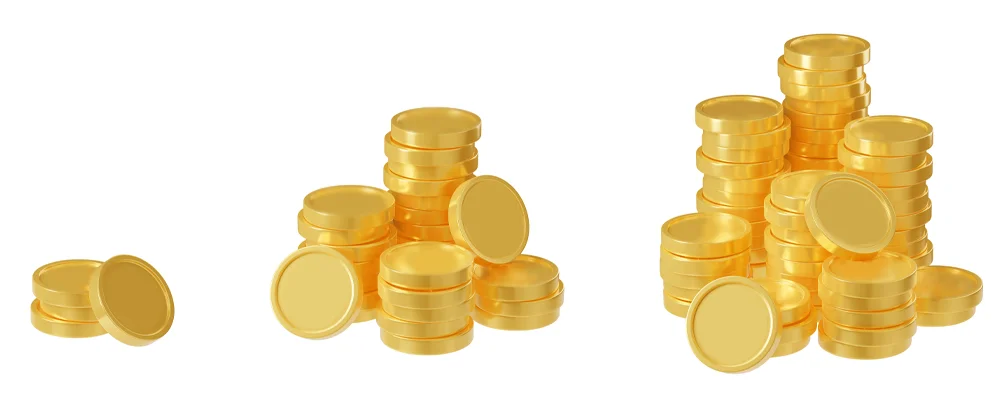RBI buys gold - have you?
Posted On Wednesday, Nov 04, 2009
International Monetary Fund (IMF) announced on its website that India has bought 200 tonnes of gold from a total of 403.3 tonnes that they had planned to sell. This transaction was completed during the period of October 19th - 30th 2009 with daily purchases at the prevailing market prices.
The point to note is that not only has the Reserve Bank of India (RBI) purchased gold - but it has done so at a price that was not at a discount to the spot prices.
The reason for buying gold
According to a Reuters report, an IMF official quoted that the sale took place at an average price of about $1,045 an ounce. The payment for the same would be made in "hard" currency - and not in SDRs, the currency of the IMF.
This means that the purchase of nearly $6.7 billion of gold would be made from RBI`s dollar reserves.
The message: the RBI is diversifying - it is moving some of its money from US dollar paper notes to gold.
The RBI says: "This was done as part of the Reserve Bank`s foreign exchange reserves management
operations."
Hmm... The RBI, as a central bank, is the fund manager of India`s reserves. Given the uncertainty surrounding the dollar, the RBI seems to think that it is prudent to diversify some of its dollar reserves to gold.
Learning from the past
During the balance of payment crisis in 1991, India mobilized its gold reserves to serve as collateral against a $400 million loan from the Bank of England. India shipped a total of 47 tonnes of the country`s gold reserves to the Bank of England as collateral. It also leased a further 20 tonnes of confiscated gold to Union Bank of Switzerland with a six month buyback option to raise a $200 million loan. The funds were used to help India meet its short-term debt obligations - and its rising import bill.
A central bank of a country serves as a lender of last resort. We saw this happen in the severe financial crisis of 2008. But, as seen above, gold has many a times served as an asset of last resort for these central bankers - just like it did for India in 1991.
Central bankers see gold as the ultimate currency and have often in the past acknowledged this fact by words and by actions.
The debasement of currencies by central bankers around the world - especially in the U.S and in UK - has led to an erosion of confidence in paper currencies. This has ignited a need to diversify reserves away from the US Dollar. Countries like Russia, China and the Middle East have often voiced their concerns and were amongst the likely nations to grab the IMF gold for sale.
India buying almost half of IMF`s available gold for sale has come as a surprise to many. Especially since, the gold markets never placed India anywhere near the top of the list of prospective buyers. Also, this has come at a time when prices are ruling near record highs.
Chart: India`s Reserves Position

Source: Bloomberg * Data as on 23rd October 2009 - does not include the 200 tonnes gold bought from IMF
India`s total forex reserves have grown significantly over the years whereas gold holdings (in tonnes) were unchanged. This led to a steep fall in gold reserves when expressed as a percentage of total reserves. India`s gold holdings declined from more than 8% of total forex reserves at the beginning of 2000 to less than 4% before this purchase from IMF.
This purchase of 200 tonnes of gold will lift the proportion of gold expressed as a percentage of total reserves to almost 6%.
Who`s next?
India has moved swiftly. China and Russia were considered more likely to grab the IMF gold.
There are chances that China might rush to grab the remaining gold for sale by the IMF, without any further delay. China`s gold reserve as a percentage of total reserves stands at 1.6%. While China has huge dollar reserves which are increasing each day, it has also voiced its concerns regarding the uncertainty surrounding the U.S dollar.
This potential sale of gold by the IMF was one of the lingering threats for gold prices. Now we have real takers for the IMF gold: 50% swallowed by India in one gulp. This will certainly lift the sentiments amongst those that believe in gold as the ultimate form of currency.
The good news is that you don`t need to be a central banker to buy gold. Follow the footsteps of RBI and diversify your investments. We have often suggested an allocation of 15% to 20% in gold. If you have bought enough gold - good, stay with it.
If you have not, you don`t need to rush to the IMF to buy some - just call your broker and place an order to buy Quantum Gold ETF. Don`t buy all the gold you need to get to a 15% or 20% allocation in one day. Buy equal amounts every month over the next 24 months and you should do well. But do monitor the prices.
After all, China has yet to buy the gold it wants.
Click here to invest in the Quantum Gold Fund ETF
A Cheaper and Convenient way of owning High Quality Gold, Buy Now!
Disclaimer:
The views expressed in this article are the personal views of the Fund Manager of Quantum Gold Fund. The views constitute only the opinions and do not constitute any guidelines or recommendation on any course of action to be followed by the reader. This information is meant for general reading purpose only and is not meant to serve as a professional guide/investment advice for the readers. This article has been prepared on the basis of publicly available information, internally developed data and other sources believed to be reliable. Readers are advised to seek independent professional advice and arrive at an informed investment decision before making any investments. Please visit – www.quantumamc.com/disclaimer to read scheme specific risk factors.
Related Posts
-

Gold Monthly for December 2025
Posted On Thursday, Dec 04, 2025
After a series of events and a strong rally in October 2025, gold demonstrated a mixed performance in November 2025, moving back and forth within a defined range.
Read More -

Equity Monthly for December 2025
Posted On Wednesday, Dec 03, 2025
Markets continued the rising trend in October with Sensex gaining 2.2%.
Read More -

Debt Monthly for December 2025
Posted On Tuesday, Dec 02, 2025
As we approach the end of the calendar year, we find ourselves at a pivotal moment, with the market split on the likelihood of an upcoming rate cut.
Read More





